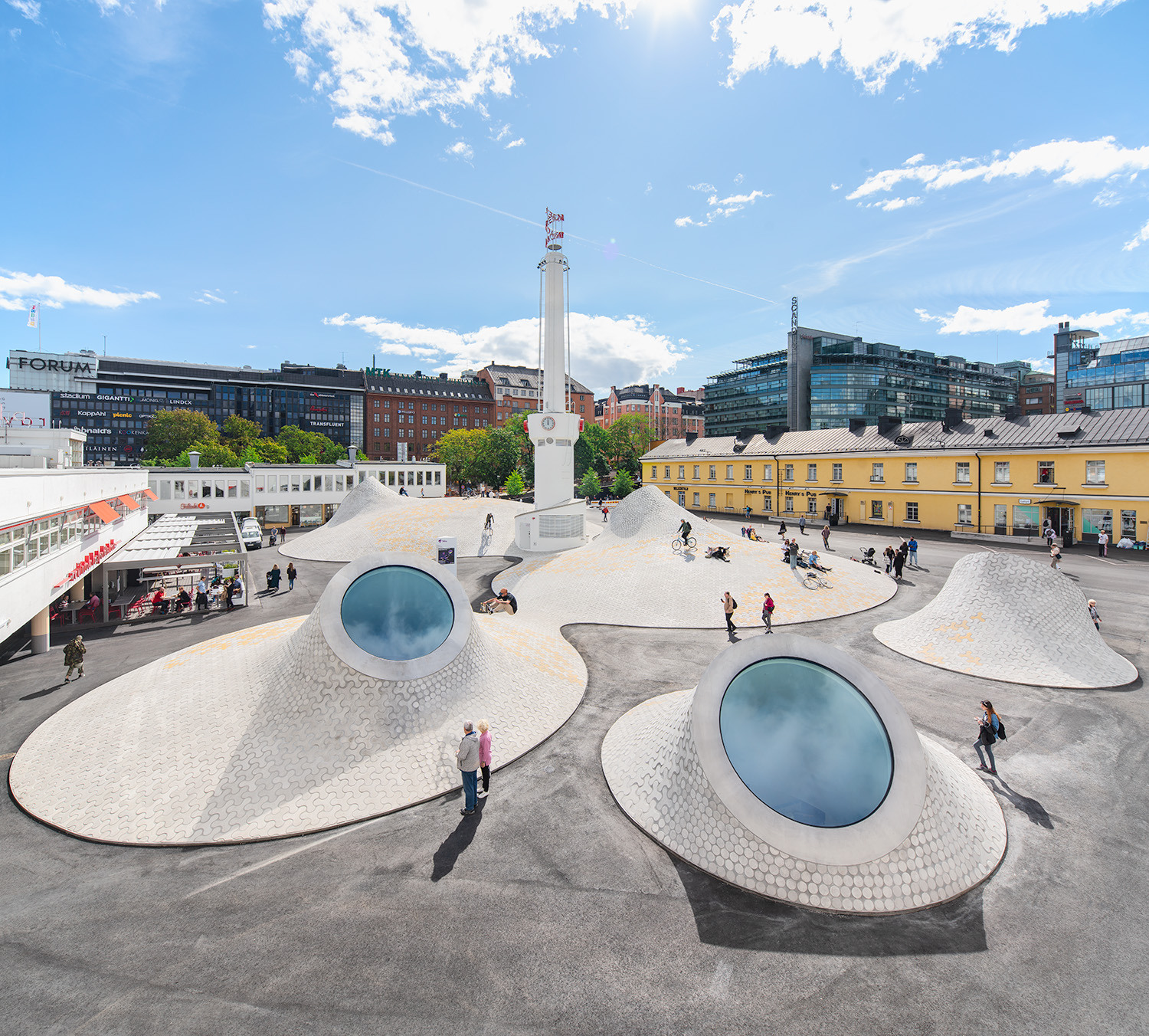At the heart of Helsinki lies the famous and mythical stone giants guarding the main doors of the Central Railway Station (1919). This iconic station, designed by Eliel Saarinen, represents the Finnish National Romantic style with a modern twist. To experience the interior in full detail, stay in the Scandic Grand Central hotel – they’ve created a neat DIY architecture tour for hotel guests.
Across the street from the station is the Neo-Renaissance-style Ateneum Art Museum (1887). Ateneum is the home of Finnish art and part of the Finnish National Gallery, with a collection that includes more than 20,000 national treasures.
No architecture tour is complete without a visit to the new Amos Rex Art Museum (2018), located in the Lasipalatsi (1936) complex and just a stone’s throw away from the Central Railway Station. Lasipalatsi, the Glass Palace, is another icon of Finnish Functional design. Located at the Lasipalatsi Square and under the famous pillar-shaped skylights, Amos Rex offers a variety of modern art exhibitions.
If silence is more your cup of tea, don’t miss the nest-like wooden Kamppi Chapel of Silence (2012), just a few steps away from Lasipalatsi. The non-denominational chapel is open to all; its interior, with soft natural lighting, offers an intimate place for a moment of meditation.
